Are you in search of the best solutions to create your own video streaming platform? Look no further! We have compiled a comparison of the world’s best video streaming platforms tailored to your specific needs.
Video streaming platforms have become incredibly popular in 2023, allowing people to enjoy their favorite movies, TV shows, and original content from the comfort of their homes. These platforms offer a wide range of entertainment options, catering to various tastes and preferences.
What is video streaming?
Video streaming is the seamless delivery of video files from a server to a client, allowing users to watch videos online without the need to download them. This technology enables access to various content like movies, TV shows, YouTube videos, and live streams. Streaming platforms like Netflix and Hulu have achieved significant success by offering video content to their subscribers.
Advantages and Disadvantages of Video Streaming
| Advantages | Disadvantages |
| Wide accessibility: Can be accessed from anywhere with an internet connection. | Dependence on internet connection: Requires a stable and high-speed internet connection. |
| Convenience: Allows users to stream content on-demand at their preferred time. | Data consumption: Video streaming can consume a significant amount of data, especially in high-definition formats. |
| Variety of content: Offers a vast selection of movies, TV shows, documentaries, and more. | Licensing restrictions: Some content may be limited or unavailable in certain regions due to licensing agreements. |
| Cost-effective: Streaming services often provide affordable subscription options. | Content rotation: Streaming platforms regularly change their content library, and certain titles may be removed over time. |
| Personalization: Users can create personalized watchlists and receive recommendations based on their preferences. | Potential buffering issues: Streaming quality may suffer if the internet connection is slow or congested. |
| Multi-device compatibility: Can be accessed on various devices such as smartphones, tablets, smart TVs, and computers. | Limited offline access: Most streaming services require an internet connection, limiting the ability to watch content offline. |
| No storage limitations: Streaming eliminates the need to download and store large media files on devices. | Dependence on service availability: Streaming platforms can experience outages or technical difficulties, hindering access to content. |
| Flexibility: Allows pausing, rewinding, fast-forwarding, and resuming playback at any time. | Quality variations: Streaming quality may vary based on the user’s device, internet speed, and server performance. |
How to choose a Best Video Streaming Platforms for Your Business
Define Your Goals and Requirements:
Begin through definitely defining your desires and requirements for the video streaming platform. Consider elements inclusive of the form of content you plan to circulate (stay or on-call for), target audience, monetization strategies, preferred capabilities (analytics, customization, scalability), and budget. This preliminary step will assist you become aware of the important thing capabilities and functionalities you want from the platform.
Research and Compare Platforms:
Conduct thorough research on special video streaming structures to be had inside the market. Consider elements including platform recognition, client critiques, ease of use, available capabilities, scalability, customer support, and pricing models. Create a shortlist of platforms that align with your requirements.
Evaluate Key Features:
Review the important thing capabilities supplied by way of each platform in your shortlist. Look for features inclusive of video web hosting, content control, monetization options, analytics and reporting, customization options, mobile app aid, scalability, safety features, and integration competencies with other gear or platforms. Evaluate how well each platform meets your particular needs.
Trial and Testing:
Take benefit of free trials or demos presented by means of the structures for your shortlist. This step will permit you to experience the personal interface, explore features, and assess the platform’s usability. During the trial period, bear in mind importing sample content, testing monetization options, reading analytics, and assessing universal overall performance and balance.
Consider Long-term Viability:
While considering a video streaming platform, investigate its lengthy-time period viability in your commercial enterprise. Look into factors such as the platform’s song file, balance, scalability, destiny updates and enhancements, and its potential to accommodate your business boom. Consider the platform’s roadmap and how nicely it aligns with your long-term dreams.
Comparing The 10 Best Video Streaming Platforms For 2023
Flicknexs:
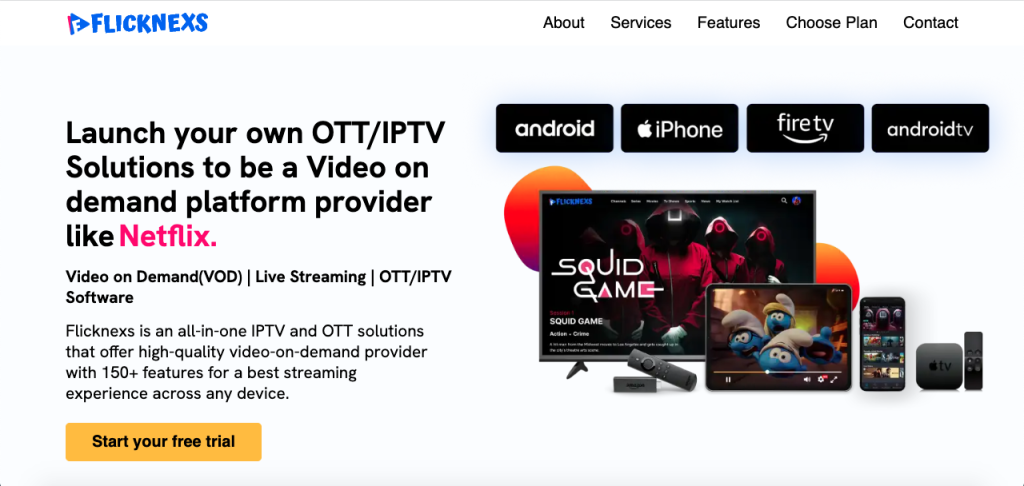
Flicknexs is a video-on-demand (VOD) platform that allows businesses to create and manage their own streaming service. It offers features such as content management, monetization options, analytics, and customizable themes.
Pros:
- Excellent video quality and adaptive streaming for a seamless user experience.
- Comprehensive analytics and reporting tools for better understanding of viewer behavior.
- Customizable branding and white-label solutions for businesses.
Cons: - Higher pricing compared to some other platforms in the market.
- Limited integrations with third-party services.
Webnexs VOD:
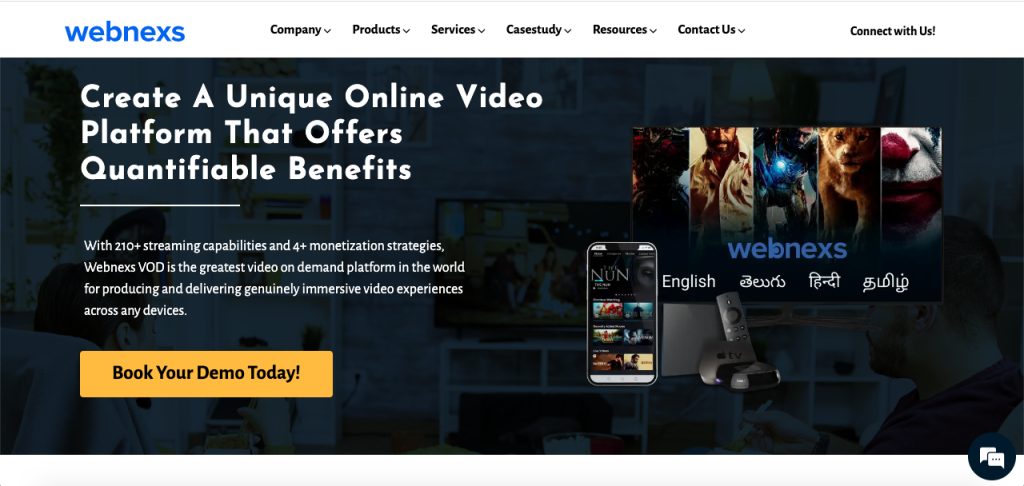
Webnexs VOD is another VOD platform that enables businesses to launch their own video streaming service. It offers features like content management, payment gateway integration, and multi-device compatibility.
Pros:
- User-friendly interface, making it easy to upload and manage videos.
- Offers monetization options like pay-per-view and subscription models.
- Good customer support and regular platform updates.
Cons:
- Limited scalability for large-scale video streaming operations.
- Some advanced features may require technical knowledge to set up.
Vimeo OTT:

Vimeo OTT is a platform that allows content creators to launch their own branded video streaming services. It provides tools for content management, monetization, audience engagement, and analytics.
Pros:
- High-quality streaming with support for 4K and HDR videos.
- Ability to create branded apps for various platforms (iOS, Android, Roku, etc.).
- Advanced marketing and promotional tools to grow the audience.
Cons:
- Higher pricing for enterprise-level features.
- Limited options for content protection and piracy prevention.
Brightcove:
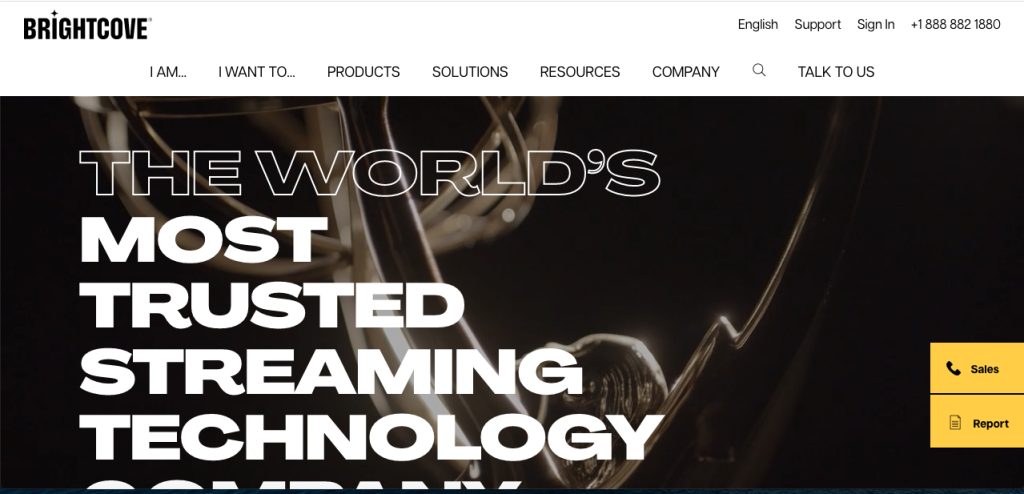
Brightcove is a comprehensive video platform that caters to various needs, including VOD, live streaming, and video marketing. It offers features such as content management, monetization, analytics, and integrations.
Pros:
- Robust content management system with easy organization and distribution.
- Extensive monetization options and integration with various ad networks.
- Wide range of APIs and developer tools for customization.
Cons:
- Pricing can be a bit high for small businesses or individuals.
- The Steeper learning curve for beginners and non-technical users.
Kaltura:

Kaltura is an open-source video platform that enables organizations to manage and distribute video content. It offers features like content management, transcoding, analytics, and integrations.
Pros:
- Open-source platform with flexibility for customization and integration.
- Scalable and suitable for both small businesses and large enterprises.
- Interactive video features like quizzes and chapter navigation.
Cons:
- Hosting and maintenance costs may be higher for self-hosted solutions.
- Technical expertise required for setup and management.
JW Player:
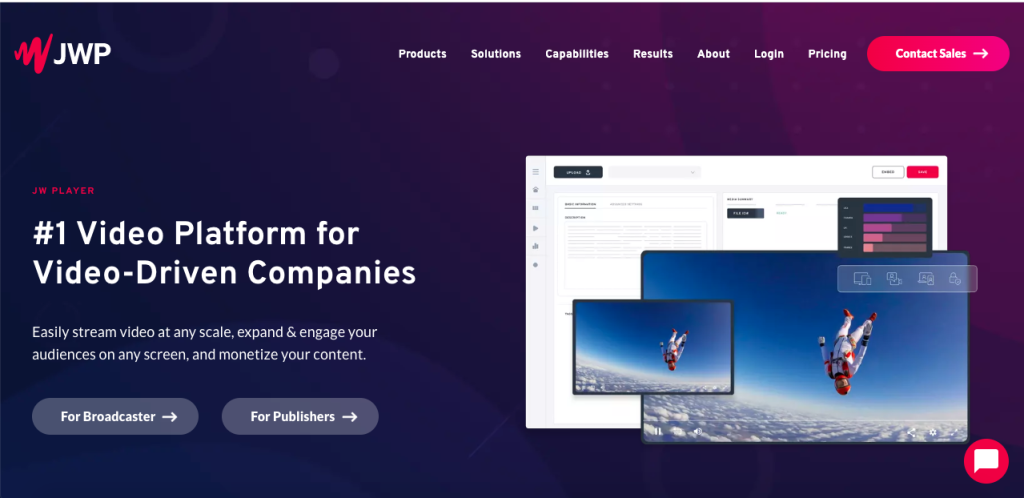
JW Player is a popular video player and platform that supports VOD, live streaming, and advertising. It offers features such as video playback, content management, monetization, and analytics.
Pros:
- Fast loading times and adaptive streaming for smooth playback.
- HTML5-based player, ensuring compatibility across devices.
- Real-time analytics and user insights for data-driven decisions.
Cons:
- Some advanced features limited to higher-priced plans.
- Customization options may require knowledge of JavaScript.
Uscreen:
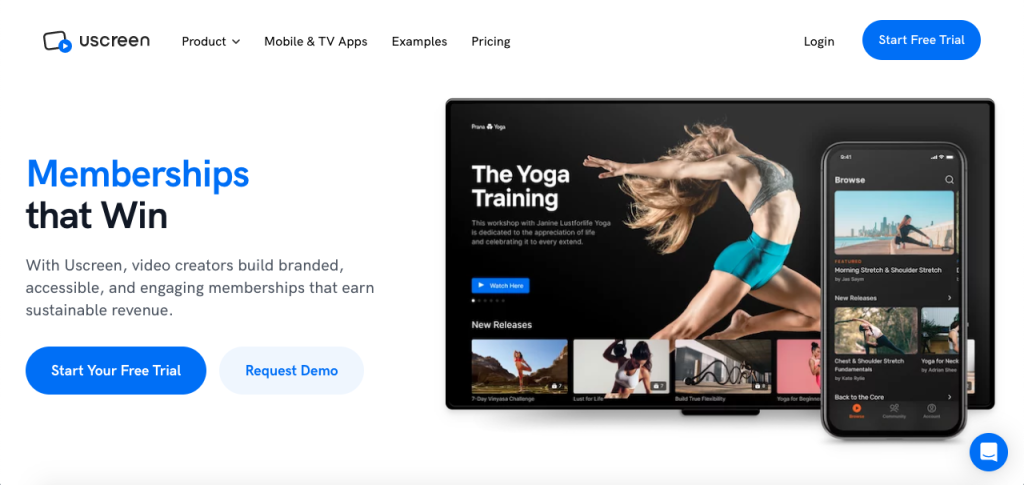
Uscreen is an all-in-one video monetization platform that allows users to launch their own video streaming service. It provides tools for video hosting, monetization, and marketing.
Pros:
- All-in-one platform with built-in website builder and payment processing.
- Customizable storefront for creating a branded video streaming service.
- Marketing and engagement tools to retain and grow the subscriber base.
Cons:
- Limited options for integrating with third-party services.
- Transaction fees can impact profitability for smaller businesses.
Wistia:

Wistia is a video hosting platform designed specifically for businesses. It focuses on providing video marketing tools and analytics to help businesses leverage videos for their marketing efforts.
Pros:
- High-quality video delivery with good playback speed and adaptive streaming.
- In-depth video analytics to track viewer engagement and behavior.
- Integration with marketing automation and CRM tools.
Cons:
- More focused on business use cases, may not be ideal for personal content creators.
- Limited support for live streaming events.
Muvi:

Muvi is a white-label video streaming platform that allows businesses to create their own streaming services. It offers a range of features for content management, monetization, and multi-screen delivery.
Pros:
- Fully customizable platform with white-label options for branding.
- Multi-device streaming support, including smart TVs and gaming consoles.
- Wide range of monetization options, including ads, rentals, and subscriptions.
Cons:
- Initial setup and configuration can be time-consuming.
- Smaller user base compared to some other platforms.
Dacast:
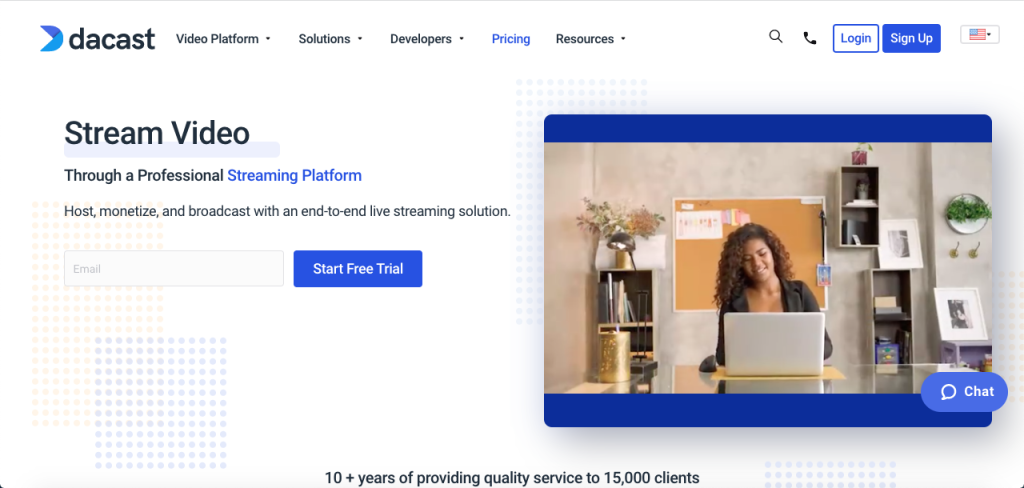
Dacast is a live streaming and video hosting platform that caters to both small and large businesses. It provides tools for live streaming, video-on-demand, monetization, and analytics.
Pros:
- Supports both live streaming and video-on-demand content.
- Offers pay-per-view and subscription-based monetization options.
- Provides white-label options for branding and customization.
Cons:
- Pricing plans may not be affordable for small businesses or beginners.
- Some advanced features require higher-tier plans.
- Limited video editing and customization options compared to specialized video editing software.
Conclusion
In conclusion, let’s take the example of Amazon Prime Video, a leading OTT platform. With a user-friendly interface, personalized recommendations, and a vast library of popular movies and TV shows, Amazon Prime Video has become a go-to platform for millions of viewers worldwide. Its successful implementation of various monetization strategies such as subscription plans, advertising, and pay-per-view options has enabled it to generate substantial revenue and maintain a loyal user base, making it a prime example of a successful video streaming OTT platform in today’s digital era.
Remember, building a video streaming platform requires hard work, dedication, and perseverance, but it is also a rewarding and fulfilling journey. Stay encouraged, stay motivated, and keep pushing forward towards your entrepreneurial dream!
Frequently Asked Questions
1. What is a video streaming platform?
A video streaming platform is a software or service that enables the distribution, hosting, and playback of videos over the internet. It provides features like content management, monetization options, analytics, and customization tools.
2. How does a video streaming platform make money?
Video streaming platforms typically generate revenue through various monetization models such as subscriptions, pay-per-view, advertising, or a combination of these. They may charge fees based on usage, provide tiered pricing plans, or offer revenue-sharing options.
3. What is the difference between live streaming and video-on-demand (VOD)?
Live streaming refers to broadcasting real-time video content over the internet, allowing viewers to watch events as they happen. Video-on-demand (VOD) refers to pre-recorded content that users can access and watch at their convenience, like movies, TV shows, or educational videos.
4. What are some key features to look for in a video streaming platform?
Important features to consider include video hosting and delivery capabilities, content management tools, monetization options, analytics and reporting, customization options for branding, scalability, support for multiple devices and platforms, and integration with other tools or platforms.
5. What are the potential challenges in choosing a video streaming platform?
Common challenges include finding a platform that fits your budget, selecting a platform with the necessary features for your specific needs, ensuring compatibility with your existing infrastructure, and assessing the platform’s scalability and reliability to support future growth. It’s also crucial to consider the learning curve and technical expertise required for implementation and maintenance.

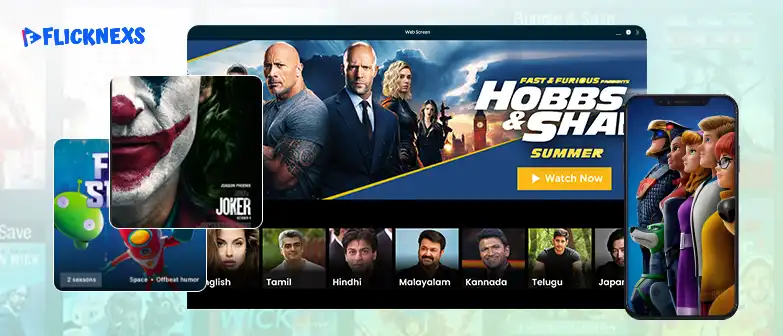

Leave a Reply